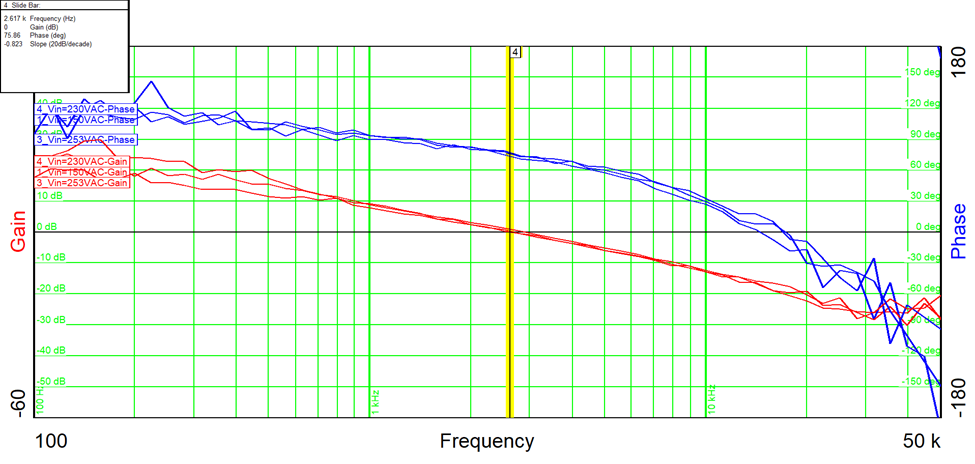TIDT374 March 2024
2.3 Bode Plot
The Bode plot is shown in the following figure.
 Figure 2-6 Bode Plot
Figure 2-6 Bode Plot| Input Voltage | = 150VAC | |
| Load | = full load | |
| Bandwidth | = 2.9kHz | |
| Phase Margin | = 71° |
| Input Voltage | = 230VAC | |
| Load | = full load | |
| Bandwidth | = 2.6kHz | |
| Phase Margin | = 76° |
| Input Voltage | = 253VAC | |
| Load | = full load | |
| Bandwidth | = 2.7kHz | |
| Phase Margin | = 76° |